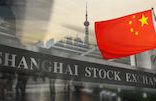Rothman’s views differs from other fund houses such as Deutsche Asset, Old Global Mutual, JP Morgan Asset Management and HSBC Global Asset Management, which have forecast further cuts in both interest rates and bank reserve requirement ratios.
In November, the People’s Bank of China slashed the one-year benchmark lending rate by 40 basis points to 5.6% and reduced the one-year benchmark deposit rate by 25 bps to 2.75%.
Recently, it cut the RRR for banks by 50 basis points to 19.5%.
According to Rothman, China doesn’t need to ease significantly because current liquidity conditions are not tight. The deceleration in economic growth is largely the inevitable result of structural changes and GDP growth in a regional or global context is still robust.
Slowing growth, sans stimulus
After two decades of double digit annual GDP growth, it is inevitable that the growth rate is slowing, Rothman said. Between 2010 and 2014, real GDP growth averaged 8.6%. Last year it was 7.4%.
“China’s leaders took no significant steps to reverse last year’s gradual deceleration [in economic growth], signalling that they are comfortable with this trend.”
Several factors, particularly demographics, contribute in a big way to this slowdown, he added.
“In past years, the workforce grew rapidly, making a significant contribution to GDP growth. Now, the working age population is beginning to shrink, eliminating the demographic dividend.
“Similarly, so much public infrastructure has already been built that the growth rate of new construction is significantly lower. Commercially built, privately owned housing boomed during its first decade of existence in modern China, and is now growing more slowly as that sector matures.”
















